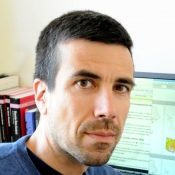Applications in the Physical and Environmental Sciences
Berkeley Statistics faculty study questions in physical sciences ranging from high-energy particle physics and statistical mechanics to cosmology (microwave cosmology, SNIa cosmology), astronomy and astronomical data processing (large-scale inference for optical astronomy surveys, crowded-starfield deblending, galaxy diversity, helioseismology), solid-Earth geophysics (seismology, earthquake risk, geomagnetism, geophysical fluid flow), climate (global circulation models, tropical cyclogenesis, changes in extreme weather events, impact of climate change, climate models in policy contexts), and ecology (soil organic carbon, historical forest carbon, regenerative agriculture, paleoecology, food webs, endangered species).
We collaborate with a broad range of physicists, geophysicists, climate scientists, soil scientists, and astronomers at Berkeley and around the world.
Researchers
The organization chart for administrative staff.






